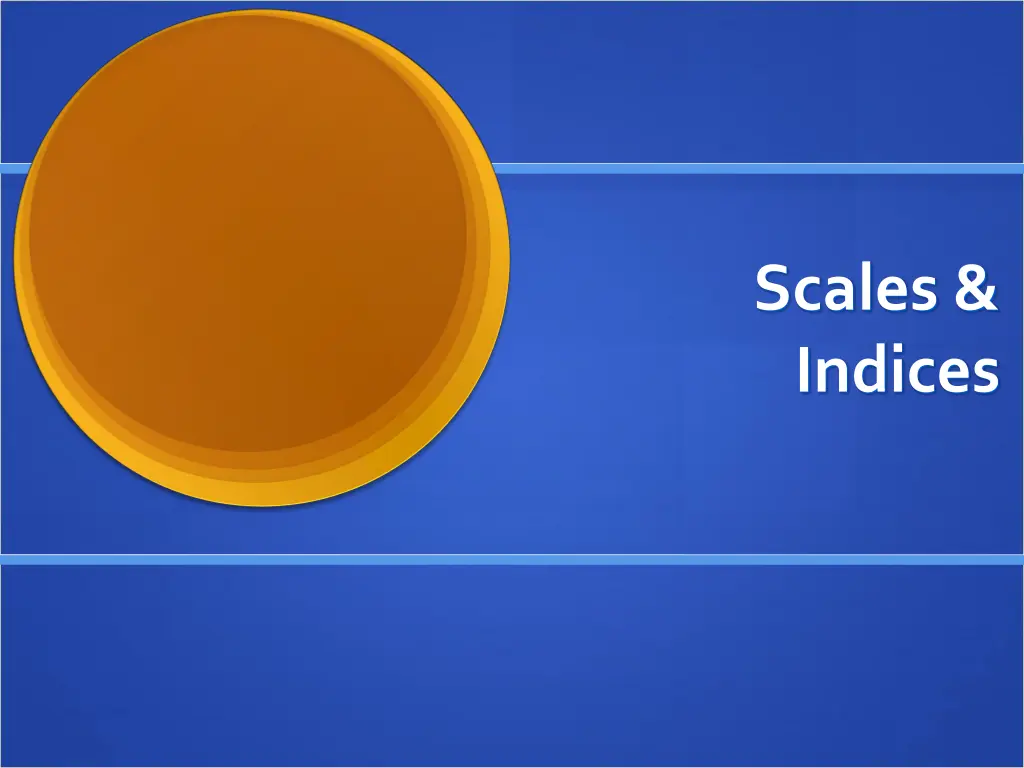
Understanding Scales, Indices, Measurement, Factor Analysis, and Concept Measurement
"Explore the world of scales, indices, and measurement in social science research, including the use of factor analysis and concept measurement to create variables. Learn about the stages of factor analysis, concept measurement examples, and combining items into scales for analysis."
Download Presentation

Please find below an Image/Link to download the presentation.
The content on the website is provided AS IS for your information and personal use only. It may not be sold, licensed, or shared on other websites without obtaining consent from the author. If you encounter any issues during the download, it is possible that the publisher has removed the file from their server.
You are allowed to download the files provided on this website for personal or commercial use, subject to the condition that they are used lawfully. All files are the property of their respective owners.
The content on the website is provided AS IS for your information and personal use only. It may not be sold, licensed, or shared on other websites without obtaining consent from the author.
E N D
Presentation Transcript
Scales & Indices
Measurement Overview Using multiple indicators to create variables Two-step process: 1. Which items go together to measure which variables Factor Analysis 2. Evaluating the reliability of multi-item scales Cronbach s Alpha
Factor Analysis Starts with a group of similar indicators (survey items) Sorts items based on patterns of inter-item similarities I.e., which items are correlated (which ones group together) Items that group together share some underlying common underlying factor Procedure is based on inter-item correlations Correlation: Measure of similarity between two variables Varies between 1 and -1
Stages in Factor Analysis Extraction How the statistical model searches for patterns Rotation Mathematical manipulation of patterns Whether it produces correlated or uncorrelated factors
Concept measurement example: Which health attitudes cluster together? Factor analysis of respondents answers Conduct analysis of response to questionnaire
Combining items into a scale Summative scale Factor scores
Summative scales Adding items or taking the mean E.g.,: Compute scale = sum.1(var1,var2,var3) Compute scale = mean.1(var1,var2,var3) Weights each item equally
Factor scores Uses factor loadings from the factor matrix to weight the items Heavier weighting to items that are more central to the factor Use save command when running factor analysis New variables with values for each case saved in data file
Cronbachs Alpha Assessing reliability of a multi-item scale Based on the average inter-item correlation Weighted by the number of items in the scale Measures internal consistency (unidimensionality) Are all the items measuring the same thing? If so, they should all be highly inter-correlated
Cronbachs Alpha Formula: A = N * r [1+ (N 1)r] N = number of items in the scale r = average inter-item correlation
Acceptable alpha for a scale Ideally, alpha > .80 Some journals accept > .70 Low alpha means either: 1. Scale is not reliable (items have lots of error) 2. Items could measure two different things Alpha if item deleted can help identify a bad item More than one bad item could be an indicator that there are items that measure a different concept


